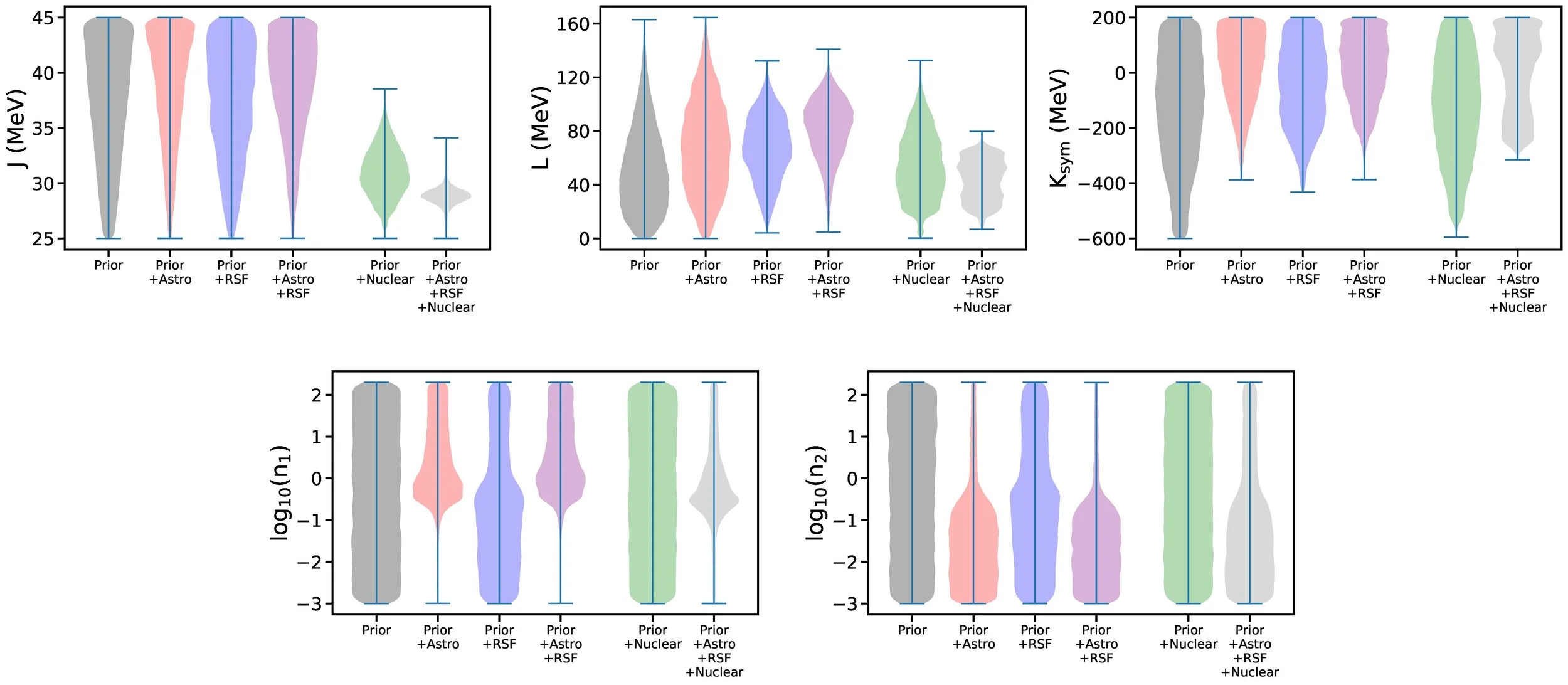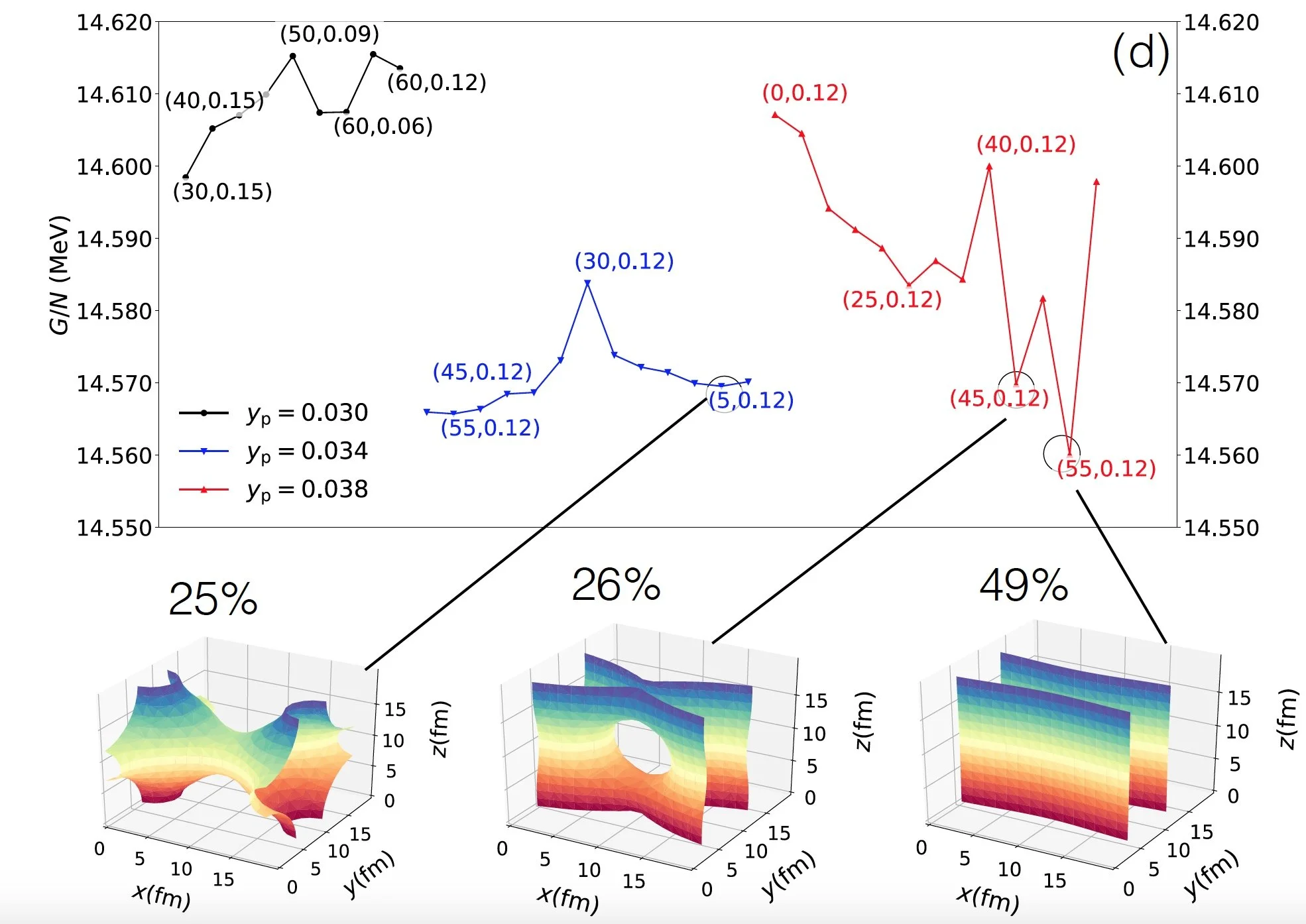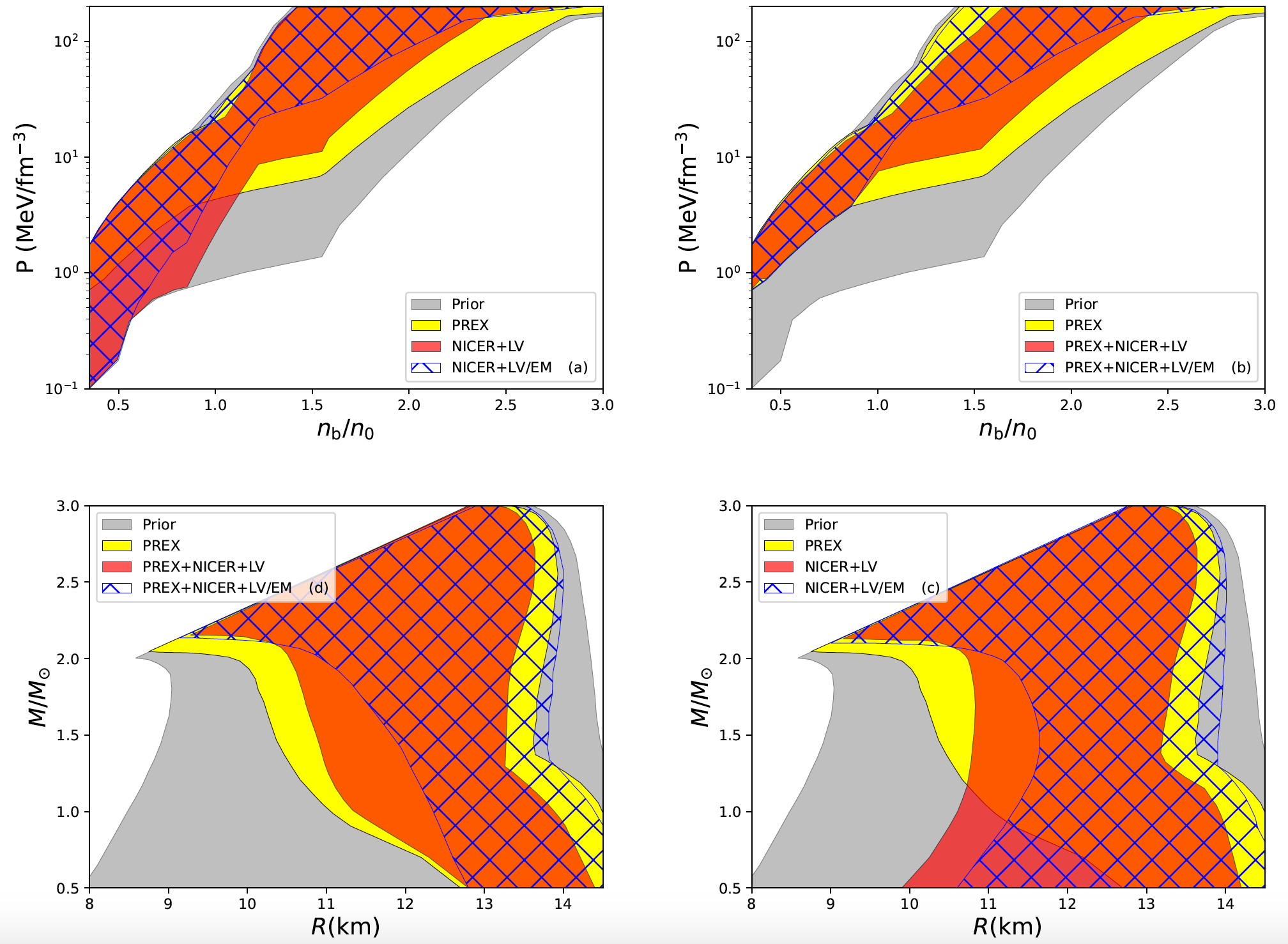NEUTRON STARS AND NUCLEAR PHYSICS
Neutron stars are the most exotic objects in the universe. Firstly, they are almost as compact (small radius to mass ratio) as Black holes. Now Black holes are super cool, but neutron stars have one thing they don’t: stuff! All matter that created the black hole and continues to be accreted by it disappears forever beyond the event horizon from our point of view. Neutrons stars, however, are matter’s last stand against gravity. They are the result of the collapse of the stellar core belonging to a star more than 8 times the mass of our Sun after exhausting the gravity-fighting pressure caused by nuclear reactions that drive the evolution of stable stars. Gravity has had its inexorable grip on the start from birth; gravity understands that the star can only produce energy for so long before its crushing grip threatens to compress the matter out of the observable universe forever. Sometimes though, at gravity’s moment of triumph, matter finds something else, a new strength, and at the last millisecond before being extinguished forever. Just before the core is engulfed by its own onrushing event horizon, looming at a distance of 3km from the centerpoint of collapse, the collapsing material holds up its metaphorical nuclear hand and says “no more”. Finding a strength from within it may not realize it had, the collapse grinds to a halt in the knick of time like, the quantum nuclear forces applying a brake like the screeching iron clasps of a locomotive hurtling towards a compromised bridge like so many action movies. The remainder of the star, raining down upon the protesting kernel, finds that “it shall not pass” and rebounds violently outwards. The shock of the rebound, the heaving volatility of the one thousand billion degree Kelvin environment and the furnace of neutrinos unleashed upon the outer layers of the star result in 90% or more of the star blasted into space in one of the universe’s most spectacular firework displays, a warning message from gravity that, although the core of this star got away with it this time, its awesome potential energy can be released cataclysmically.
As the dust settles (sometimes literally, but astronomers’ dust, not the stuff on your bookshelf), our defiant ball of matter on the brink stabilizes, realizing that as tumult dissipates it can quite happy sit as a marker for the universe to know that matter still has some say over the fate of the most massive stars.
What is the cost to matter to stand up to gravity? Well, the heroes of the story are protons and neutrons. Ordinary matter contains protons and neutrons in nuclei, but they are far away from everyday action as the electrons, suffusing space 1000s of times further than the edge of the nucleus, guard the sanctity of matter from collapse or disintegration. Protons and neutron are important - without the protons we couldn’t have the life-giving electrons, and without the neutrons the protons would fly the coup. But they defer to electrons to exert the forces required to keep the architecture of the matter that surrounds us from crumbling.
It turns out they were there for us all along. In matter’s greatest moment of need, they stepped up when electrons had fallen by the wayside to to provide the resistance. Neutron stars are a monument to their efforts, named as a memorial to the efforts of neutrons and protons. Matter has been crushed into a tortured form, a sea of neutrons and protons that don’t really want to have stepped into their own ocean, and a melange of competing forces as new types of matter are extruded from the neutrons and protons, superfluidity and superconductivity weaving protons and neutrons into ghostly whirlwinds tangled together, striving to untangle themselves. Buoyancy forces them towards the surface, but nuclei, made monstrous by the environment, continually snag them and impede their progress.
The outer regions of the neutron star have solidified - but not into a solid we would recognize. The crust buckles and ruptures under the constant stresses: the magnetic field lines like steel rebar pulled this way and that, matter falling on top of it cannibalized from a companion star, and those flux tubes and vortices like tightly wound rubber intended to propel a model airplane.
Physics Education Research
I am a founding member of the TAMUC Physics Education Research team. Our main goal is to answer questions related to what practices are most effective at student learning. Our particular focus is one how students work most effectively in groups to gain depth understanding of physics concepts. We have performed research into what qualities make a student group in Studio physics classes most successful, and we have investigated how a learning community spontaneously forms through students participation in the discussion forums of our online Masters courses for Physics teachers,
Research Highlights
Constraining Nuclear Symmetry Energy with Multi-messenger Resonant Shattering Flares
PRL 130, 112701, 2023
Duncan neill, Rebecca Preston, William G. Newton and david tsang
The nuclear symmetry energy is an important property which contains information about the many-body interactions of nucleons at densities near that of atomic nuclei (the nuclear saturation density) and at high neutron/proton ratio. It gives the energy cost of converting protons into neutrons in the nuclear matter expected to exist deep inside neutron stars, the stellar remnants of high-mass stars. Neutron stars provide a natural laboratory to explore matter at high densities. Much recent effort in the experimental nuclear physics and astrophysics community has been devoted to constraining the parameters describing nuclear symmetry energy. These include the recent PREX and CREX experiments at Jefferson Lab measuring the neutron skin of Lead and Calcium nuclei, the Neutron Star Interior Composition Explorer (NICER)'s measurements of X-ray pulsations from the surface of neutron stars, and the Laser-Interferometer Gravitational-Wave Observeratories (LIGO) measurement of the gravitational waves from a neutron-star merger. In this paper, the authors have shown that probes of different regions of a neutron star probe different physics. In particular the coincident timing of a Resonant Shattering Flare (RSF) -- a flare of gamma-rays preceding a neutron star binary merger indicative of the shattering of the neutron star crust -- and the gravitational-wave chirp from a merger can provide a strong complementary probe of nuclear symmetry energy, comparable to those of modern terrestrial nuclear experiments. This measures the resonant frequency of an asteroseismic interface-mode at the crust-core boundary of a neutron star, which occurs at roughly half-saturation density. The authors show that probes of bulk neutron star properties, such as mass, radius and tidal deformability are not as sensitive to the nuclear symmetry energy, but instead constrain the unknown physics of the neutron star core, where exotic forms of matter may exist.
Here we present a detailed microscopic study of the energy landscape of nuclear pasta, arguing they bear some of hallmarks of a glassy material and they might exhibit temperature dependent thermal conductivity, impacting crust cooling observables
We make ensembles of neutron star EOSs out of a nuclear model at low densities and polytopes at high densities. For the first time we perform a simple inference of the size of the neutron star crust from astrophysical and nuclear data combined consistently
A simultaneous gravitational wave detection would tell us the resonant frequency, from which properties of the crust and the underlying nuclear physics can be inferred. Tidal forces during last stages of binary neutron star inspiral can excite crust interface modes to resonance, shattering the crust and releasing its elastic energy as a short gamma ray burst.
The compressible liquid drop model captures the bulk physics of the neutron star crust. Its relative simplicity allows for large ensembles of crust models. Using an ensemble of input nuclear models with prior distributions of symmetry and surface energy parameters we explore in some detail the resulting distributions of nuclear, neutron matter and crust properties and the correlations between them using the maximal information coefficient. These would be priors that could be used as input into Bayesian analyses of neutron star properties from astrophysical and nuclear observables consistently.
Neutron skins are one of the most powerful probes of the neutron rich matter which finds its home in neutron stars. We created ensembles of nuclear energy density functionals parameterized by the first three parameters of the symmetry energy, and perform Bayesian analyses over a variety of neutron skin data sets, obtain symmetry energy and neutron matter constraints.
Current and Past Awards and Grants
Education
University of Oxford, UK
M.PHYS PHYSICS
Graduated June 2000
University of tennessee, KnoXville, U.S.
M.SC. PHYSICS,
Graduated Aug 2002
University of Oxford, UK
D.PHIL. PHYSICS
Graduated May 2008
AWards
2024: Faculty Senate award for excellence in scholarship
2023: Lafferty award for excellence in scholarship
2022: Chancellors Academy for Teacher-Educators
2021: Faculty Senate Award for Teaching: Technology
2019: Humboldt Faculty Senate award Service
2018: Researcher of the year
2018: Research Mentor of the year
2018: Faculty senate award for Teaching: Innovation
2014: Junior Faculty Research award
GRANTS
2022-2025: PI - NSF RUI Neutron star crusts in multi-messenger astronomy $179,849
2020-2023: PI - PhysTEC Texas Regional Network Grant $15,000
2020-2025: local PI - NSF Noyce Track 4: Teacher Preparation For Rural STEM Teacher Persistence And Retention $70,000
2019-2023: co-PI - PhysTEC Comprehensive Site Award: $288,397
2019-2023: PI - NASA ATP Lattice Boltzmann Simulations of soft nuclear astro-materials in neutron star crusts, $357,056
2020-2025: PI - NSF Noyce Track 1: Building an Outstanding Community of STEM Teachers in Rural North-East Texas $1,199,473
2016-2018: PI - NSF Noyce Track Capacity Building Grant $74,948
2014-2017: PI - Cottrell College Grant; Investigating the effect of short-range correlations on neutron star properties
2011-2015: co-PI - NASA ATP Constraining the symmetry energy from neutron star observables $399,870






